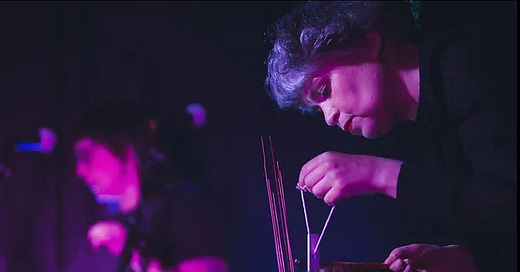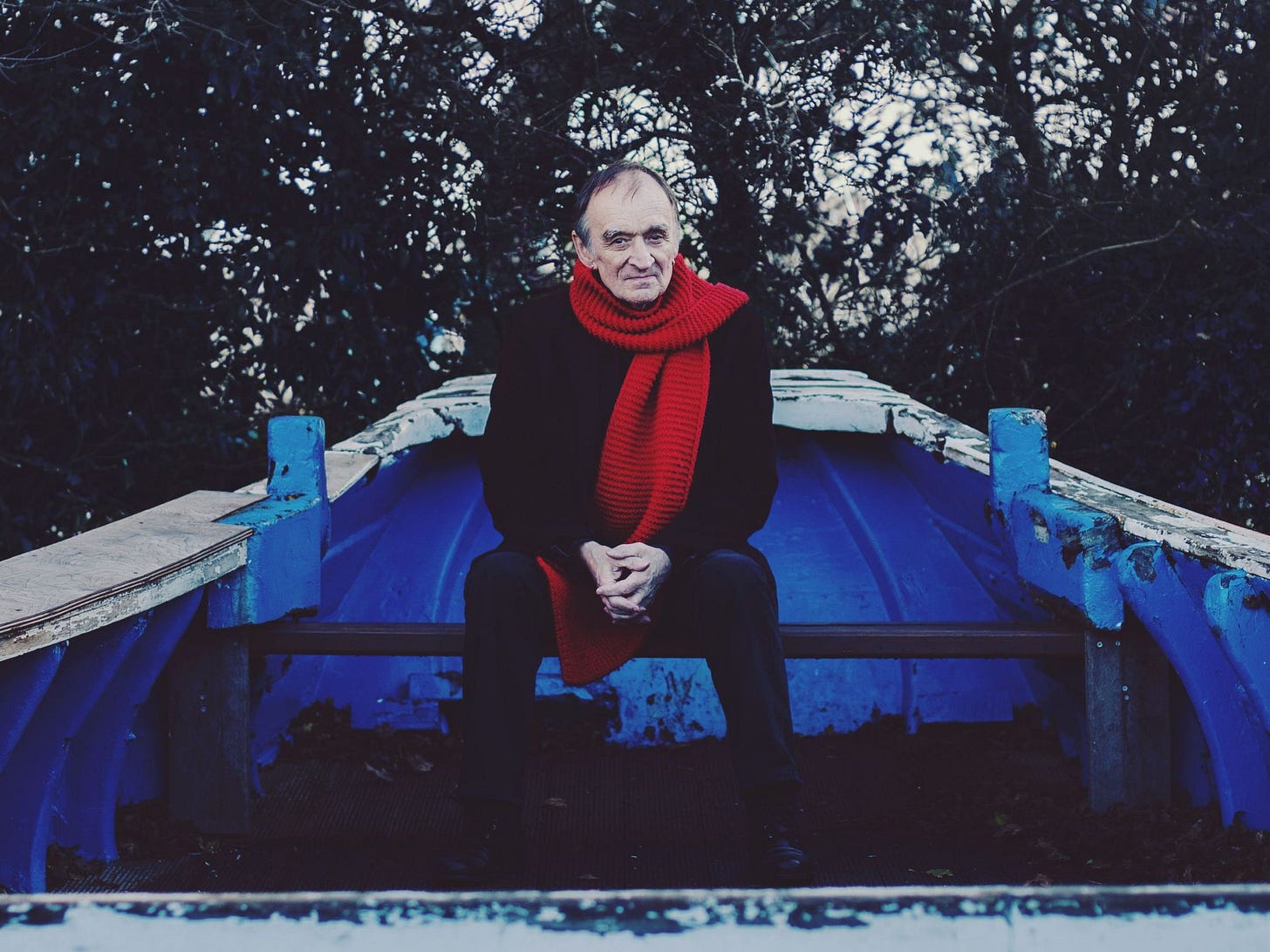I’ve heard rumours, in the past, about folk clubs that place the most stringent of rules upon performing artists. A friend once told me of a club that would accept no original tunes, instead offering a pre-approved list of traditional numbers that, I suppose, had been deemed safe by the hosts. Nothing that would upset the long-standing regulars. Just your straightforward, reliable tunes about murders and drownings, most of which are set sometime before noon in May.
Folk should be a living, breathing genre. A world that changes to adapt to the people and customs of its time. The old songs are performed not only to preserve our past, but also to connect it to contemporary life. Lyrics that speak of war, of social injustice, of the mistreatment of minorities: these are not historical artefacts. Folk music just offers early examples of songs that address contemporary issues.
But still, there remain a few who engage instead in a sort of musical taxidermy, attempting to preserve folk music, rather than sustain it. To frame it, rather than feed it.
Booking acts for Folkroom, it never struck me to approach the genre as a museum piece. It helped, of course, that I came to folk at a point in time at which the definition was perhaps the broadest it had ever been. When I launched the first Folkroom night in 2010, ‘folk music’ had re-entered the public vernacular in no small part as a result of the phenomenal success of the debut Mumford & Sons album. Around the time of that initial gig, the Mercury Prize was announced, drawing from a list that included not only Mumford, but also Laura Marling and Villagers.
Now, it isn’t my place to deliver the deciding vote over whether or not Mumford & Sons are folk. But there is something telling about the way that opposing factions made their case regarding the band. For some, the case was clear: the band featured a banjo, and so must be folk. Naysayers, on the other hand, shrugged off the instrument and focused on the broader sound. The Evening Standard once described them as ‘Coldplay with a banjo’.
Both parties essentially based their argument around the sound of the project, and doing so betrayed a misunderstanding of what folk is about. The fact that each viewpoint cancels out the other highlights how difficult it is to define folk by sound. The factors that qualify a song for some will disqualify it for others. It’s like defining whether or not a breakfast is a ‘Full English’ based on whether the sauce is red or brown. These are - or can be - components. But if somebody serves me up a plate with sausages, bacon, black pudding and fried bread, I know exactly what the situation is (and I’m not complaining for one second, whichever sauce is provided).
Besides, it’s entirely possible to deliver engaging and innovative folk music regardless of the instruments at hand. I have, over the last decade and a half, watched acts at Folkroom nights deliver dazzling folk sets using synthesizers and saxophones, theremins and electric, bodyless double basses. One evening, Deerful performed an entire set using only the noises they could make with a Game Boy Color. It was mesmerising. It was unexpected. It was resolutely folk.
The most frequently cited definition of the genre is a line by the blues singer Big Bill Broonzy, though it is generally misattributed to Louis Armstrong: ‘All music is folk music,’ it goes. ‘I ain’t never heard no horse sing a song’. I’m broadly in agreement with this statement.
When I book for Folkroom, I have to balance this approach with audience expectations - the question is rarely ‘do I think this artist is folk’, but instead ‘can I get away with calling this artist folk’. Audiences, for the most part, are happy to let me decide for them. Though someone may occasionally approach me after a gig and say ‘it was good, but it wasn’t folk’, most people understand that the labels we give our music aren’t what matters. They exist for marketing purposes, or to help the Spotify algorithm define your year.1
Next week we’ll host Burd Ellen at Peggy’s Skylight in Nottingham. Their music, which combines traditional folk songs with evocative (and occasionally provocative) vocals and instrumentation, is the perfect balance between the old and the new. Gayle Brogan creates sweeping sound-washes and has drawn on zithers, violins, harps and an array of synthesizers to create the duo’s dark and experimental music. Debbie Armour’s vocals often feel as though they have been drawn from a dangerous, other-worldly place. Hers is the voice that beckons you into the woods in the dead of winter.
Like so many of the best folk acts before them, Burd Ellen are doing the hard work for you - digging through the annals of British folk music and presenting their findings the way they see fit. When I named Folkroom’s newsletter ‘Modern Folk’, I intended to capture the breadth of our contemporary understanding of the genre, to allude to the grand scale of what folk is and can be in the world today. But, equally, there is no more accurate and succinct description of Burd Ellen than those two words. They are modern folk. They are also one of the most enthralling live acts on the planet right now.
Burd Ellen play Peggy’s Skylight in Nottingham on December 15th. They’ll be supported by another act who is reimagining the way we look at folk music, Rosie Brownhill. Tickets are available here.
Of course, if folk music is about keeping tradition alive, there are few more important living champions of the genre than Martin Carthy. A leading voice in the English folk revival of the 1960s, Carthy’s work not only helped introduce audiences across the nation to traditional music, but also famously influenced iconic American artists too. Without Carthy, we do not have Simon & Garfunkel’s ‘Scarborough Fair’. We do not have Bob Dylan’s ‘Girl from the North Country’.
I’ve had the opportunity to work with Carthy on a number of gigs over the past five years. He has played the Toy Museum in Brighton for Folkroom, and Green Note in London. I am always blown away by his sets, in which his encyclopaedic knowledge of the genre is on full display.
At 83, Carthy still charms and plays with his audience, and he remains a champion both of folk clubs and young folk artists. I always relish the opportunity that his gigs afford me, a chance to introduce a new support act to the audience of folk devotees. In January, Folkroom will bring Carthy back to Nottingham, and alongside him audiences will enjoy a set from The Water Chorus - an act who might be the best new interpreters of traditional folk that I’ve seen in the last five years. Their music teeters between the old and the new, and will be the perfect fit for a Martin Carthy gig.
Martin Carthy plays Peggy’s Skylight in Nottingham on January 19th. The Water Chorus support. Tickets are available here.
I’m deep into the process of booking gigs for 2025, and there are some very exciting events on the horizon. Nottingham folk fans can already book tickets for Sophie Jamieson in February and Chris Wood in March.
Folkroom will return to London and Brighton in May, with a visit from one of our favourite international artists. The theremin will be making a comeback. Keep your eye out for more updates in our future emails. I’m really excited by some of the plans brewing behind the scenes and - after a few years of transition for Folkroom - it feels good to be closing 2024 out with our new night in Nottingham flourishing. Have a happy Christmas folks. A sparkling Hanukkah. A hangover-free New Year. Folkroom will be back in 2025, and we’ll be as liberal with our definition of ‘folk’ as we’ve ever been. It’s the only way we know how.
For me ‘Mellow Dinner Softcore Indie Folk’ in August, and ‘Cottagecore Folkie Singer-Songwriter’ in October. As far as I can tell, these are the exact same thing, only one involves knitwear.








